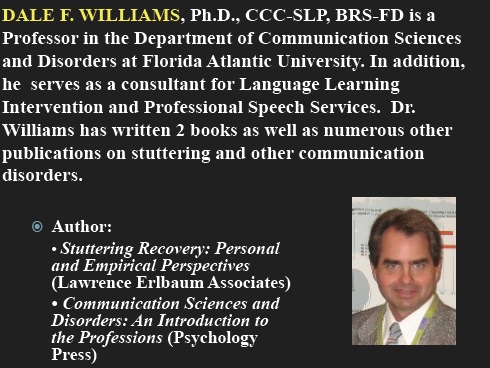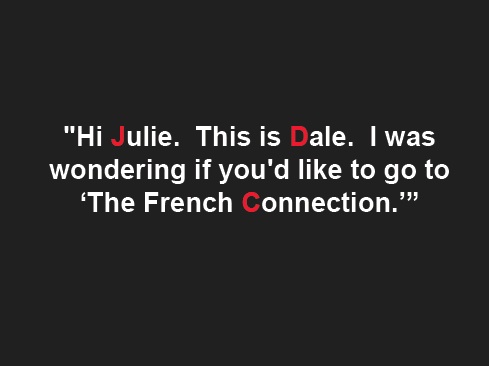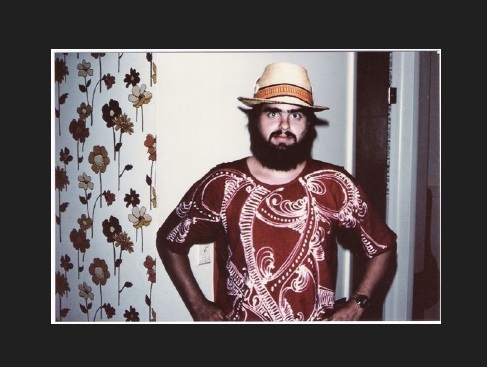Confronting the Safety of My Head
 |
About the presenter: Dale F. Williams, Ph.D., CCC-SLP, BRS-FD is a Professor of Communication Sciences & Disorders at Florida Atlantic University, where he serves as Director of the Fluency Clinic. He is also a consultant with Language Learning Intervention and Professional Speech Services, Inc. A board-recognized fluency specialist, Dr. Williams is the Chair of the Specialty Board on Fluency Disorders and coordinator of the Boca Raton chapter of the National Stuttering Association. His 2006 book is entitled Stuttering Recovery: Personal and Empirical Perspectives (Lawrence Erlbaum Associates, Inc.). |
Confronting the Safety of my Head
by Dale Williams
from Florida, USA
INSTRUCTIONS: Listen to the audio and follow the pictures below. Then read the text at the end of the pictures. Be patient while the audio loads
 |
 |
 |
 |
 |
 |
 |
The invitation, as extended by Judy Kuster, was an opportunity to share my "insights and personal path toward recovery" from stuttering. I said I would be honored, despite being neither recovered nor particularly insightful.
Mind you, I knew the basics. I avoided it, I got worse, I confronted it, I got better. But my sense was that I had to tell the story in more than 12 words. Coming up with anecdotes and examples to illustrate my bare-bones foundation forced me to look at my life closely. In doing so, it amazed (well, mildly interested) me how often avoidance/confrontation seemed to be a central issue-not just with stuttering, but also dating, ordering food, and many other ordinary life experiences, including composing this speech. Then again, maybe that's true of everybody, whether or not they stutter. Either way, I had a theme.
Next I decided I needed a good introduction. My dad sent me the dorky prom picture that I knew would get a laugh. I immediately made it my first visual. But I also thought of a line that struck me as funny and nicely introduced my first story. The problem was that I often find things funny that others do not and I thus had no clue whether my opening line would get the desired response. And yes, I did see the irony of trying to confront an inner doubt about starting a speech about confronting inner doubts.
On the day of the speech, I was still undecided how I would open. Oddly, I gave it little thought, primarily because I got lost in the other presentations. As you will hear (or have heard), the speakers were quite compelling and I could identify completely with many of their experiences (as could others; I have assigned many clients to listen to the speeches as a way of bringing stuttering-related emotions to the surface).
When did I decide to lead with the risky line instead of the safe picture? When Judy finished introducing me and I was walking toward the podium.
Fortunately, the audience was nice.
SUBMITTED: August 30, 2012

